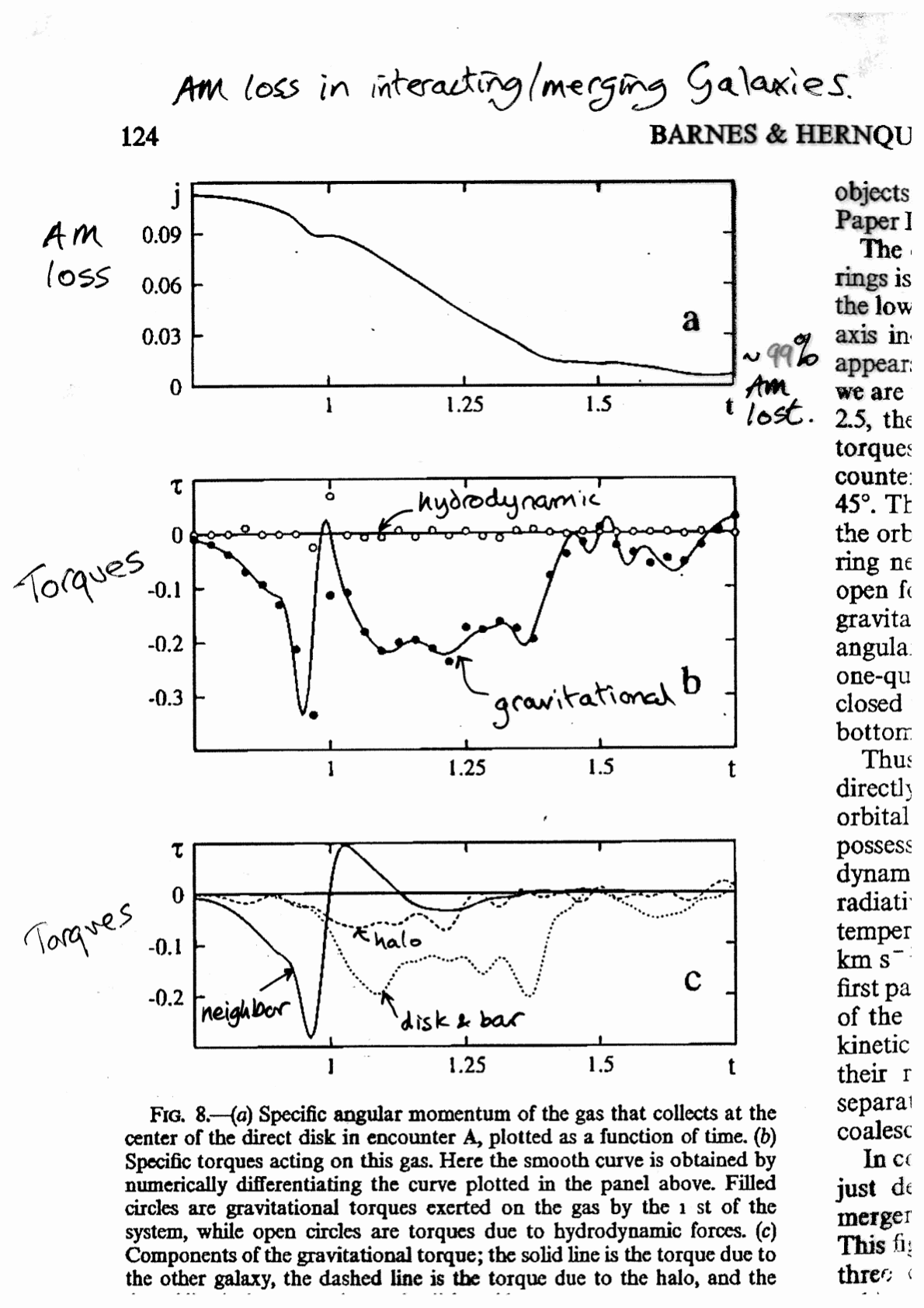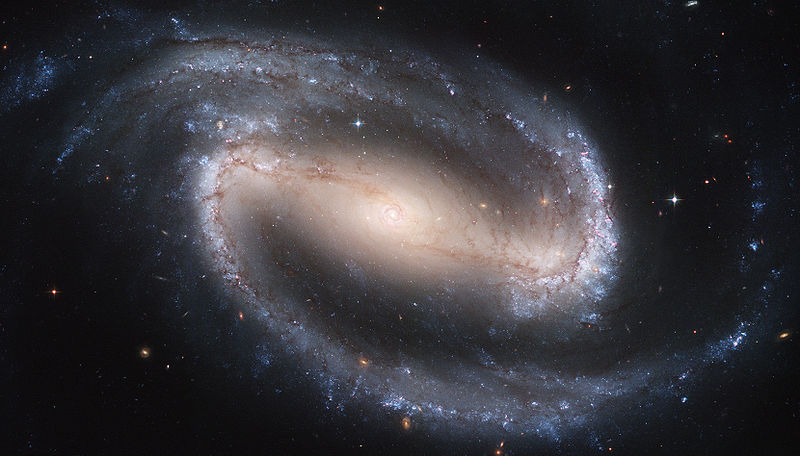
Two disks during early stages of interaction. Prograde (left) and Inclinded (right). For each, left is gas and right is stars. Note how bars form in each, with slight (almost invisible) offset in angle which drains the angular momentum from the gas. Hence it falls to the center to form a compact nuclear disk.

Angular momentum loss (top). The most important torques are between the gas and the stars, not the hydrodynamic (gas on gas) torques (middle). The primary torques are from the bas within each galaxy, not from disk or the passing galaxy (lower).

Although NGC 1300 is not an interacting galaxy, it shows nicely how the gas shocks on the leading edge of the bar (where the dust lanes are seen). Thus, the primary stellar mass in the bar pulls back on the gas, draining its angular momentum.